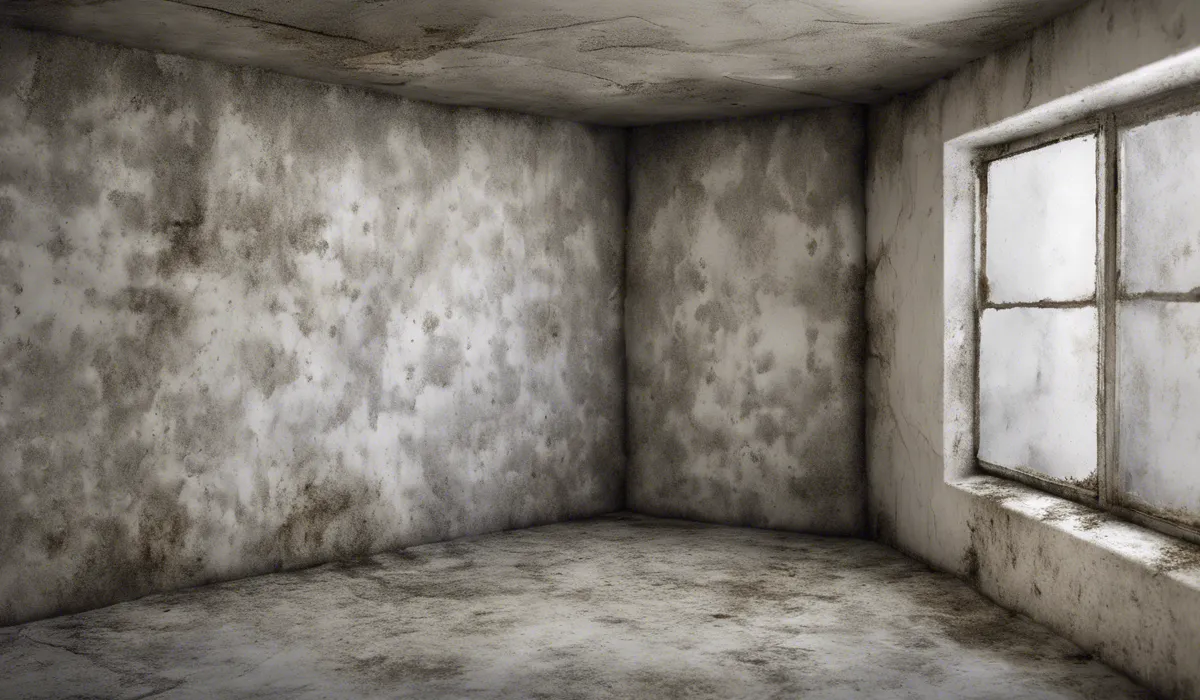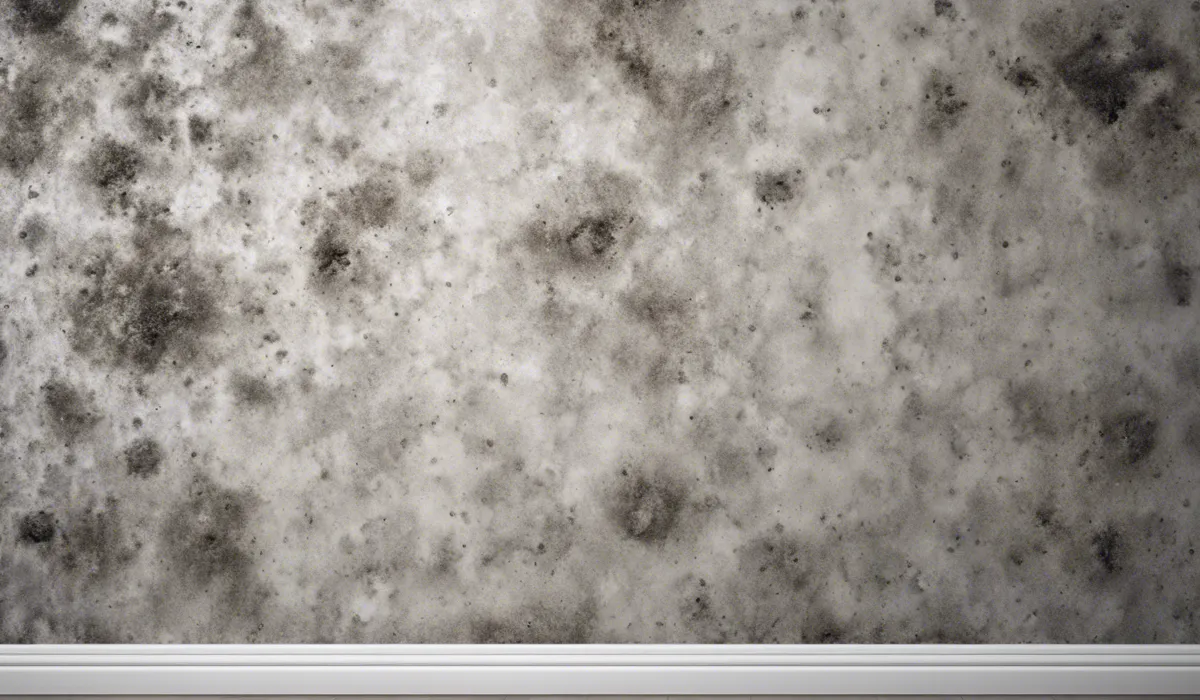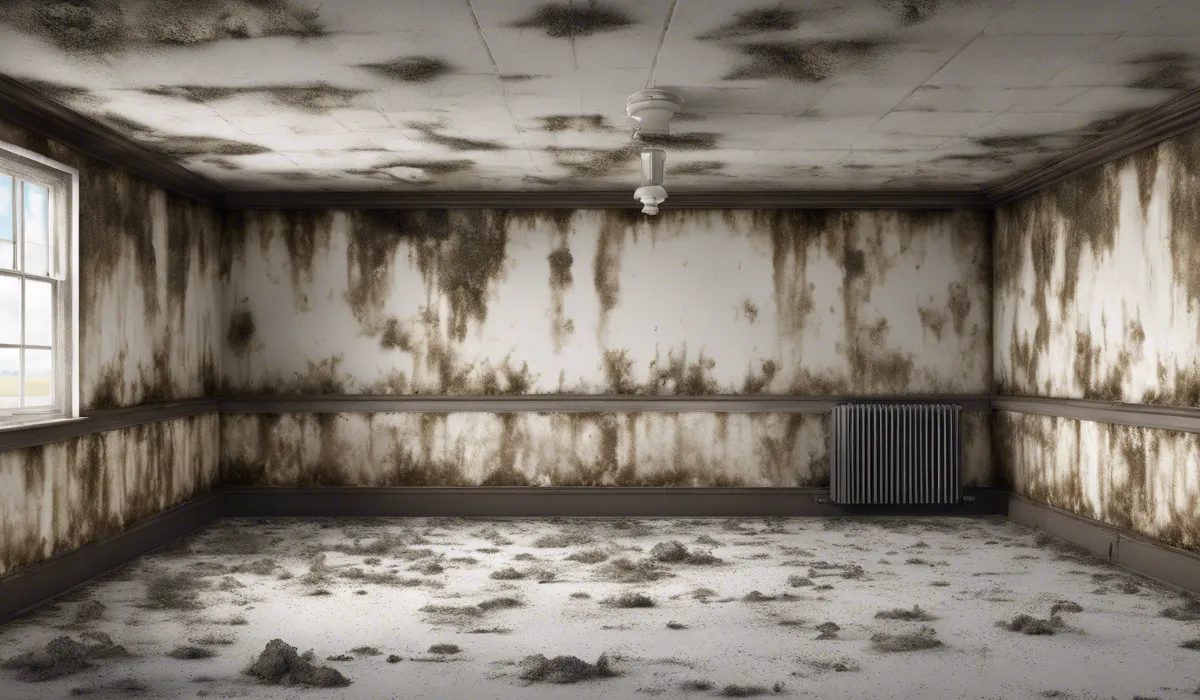To stop mold from growing on walls, maintain low humidity indoors (below 60%), ensure proper ventilation, fix leaks promptly, and use mold-resistant paint. Clean existing mold with a solution of 1 part bleach to 3 parts water.
Understanding Mold Growth on Walls

What is Mold?
Mold is a type of fungus that can grow almost anywhere there is moisture and organic material. It reproduces by releasing spores into the air, which can settle on surfaces and start new mold colonies.
Mold comes in various colors, including black, white, orange, green, or purple, and it often appears as spots or a fuzzy growth on walls.
Excess Moisture and Humidity
Moisture is the main factor that allows mold to grow on walls. High humidity levels, especially above 60 percent, create the perfect environment for mold spores to thrive.
This can happen from steamy showers, cooking, or even just breathing inside your home. It’s important to keep indoor humidity low to prevent mold growth.
Lack of Ventilation
Proper ventilation helps to reduce moisture in your home. Kitchens, bathrooms, and laundry rooms are common areas where mold can grow due to a lack of air movement.
Without ventilation, moisture from everyday activities can’t escape, which increases the risk of mold growth on walls and ceilings.
Temperature Fluctuations
Mold grows best in warm temperatures, but it can also grow in colder conditions when there is moisture.
Rapid changes in temperature can cause condensation on walls, providing more moisture for mold to grow. It’s important to keep your home at a consistent temperature to help control mold growth.
Health Risks of Mold Exposure
Mold exposure can cause various health problems, especially for people with allergies, asthma, or weakened immune systems.
Symptoms of mold exposure include coughing, sneezing, throat irritation, and skin rashes. In some cases, it can lead to more serious respiratory issues.
Signs of Mold Growth
Identifying mold on walls is the first step to addressing it. Look for discolored patches, black or green spots, or a musty smell.
If you see any of these signs, it’s time to take action to remove the mold and prevent it from coming back.
Preventative Measures to Stop Mold

Controlling Indoor Humidity Levels
Keeping the humidity inside your home low is crucial to preventing mold. Aim for a humidity level below 60 percent.
You can use a hygrometer to monitor humidity levels and take steps to reduce them if necessary.
Use of Dehumidifiers
Dehumidifiers are a great tool for controlling humidity. They work by removing excess moisture from the air.
Using one in areas prone to high humidity, like basements or bathrooms, can help keep the air dry and mold-free.
Ventilation Improvements
Improving ventilation in your home can help prevent mold by allowing moist air to escape.
This can be done by installing exhaust fans in your bathroom and kitchen, which will remove steam and moisture. Make sure your vents are clean and unblocked to maximize airflow.
Maintenance of Heating and Cooling Systems
Heating and cooling systems can help control the climate in your home, but they need to be maintained properly.
Regularly check and clean filters, and ensure that your air conditioning unit is not producing excess moisture.
Good Air Circulation
Use of Fans
Fans help to move air around, which can prevent moisture from settling on walls. Ceiling fans or standing fans are a simple way to improve air circulation throughout your home.
Opening Windows Regularly
When the weather allows, open your windows to let fresh air in and reduce humidity. This is an effective and natural way to ventilate your home and prevent mold growth.
Fixing Leaks Promptly
Leaks in your plumbing or roof can introduce a lot of moisture into your home, which can lead to mold growth. Inspect your home regularly for leaks and fix them as soon as you find them.
Mold-Resistant Materials
When painting or renovating, choose mold-resistant paint and building materials. These products are designed to prevent mold growth and can be especially helpful in damp areas of your home.
Remediation Strategies for Existing Mold

Safety Precautions
Protective Gear
Before you start removing mold, protect yourself with gloves, a mask, and goggles. This will help prevent you from breathing in mold spores or getting them on your skin.
Sealing Off the Area
Seal off the area where you will be working to prevent mold spores from spreading to other parts of your home. You can use plastic sheeting and tape to cover doorways and vents.
Natural and Chemical Solutions
Vinegar and Baking Soda
Vinegar and baking soda are natural alternatives to chemical mold removers. Apply vinegar to the moldy area, let it sit, then scrub with baking soda for an effective treatment.
Commercial Mold Removers
If the mold problem is severe, you may need a stronger solution. Commercial mold removers can be effective, but make sure to follow the instructions carefully and keep the area well-ventilated.
Cleaning and Disinfecting Walls
After removing the mold, clean and disinfect the walls to kill any remaining spores. This can help prevent the mold from returning.
Professional Mold Remediation Services
If you’re dealing with a large area of mold or if it’s in hard-to-reach places, it may be best to hire professionals. They have the equipment and experience to safely and effectively remove mold.
Monitoring and Maintenance
After the mold has been removed, keep an eye on the area to make sure it doesn’t come back.
Continue to keep humidity low, fix any new leaks quickly, and maintain good ventilation to keep your walls mold-free.
FAQs About Preventing Mold on Walls
How can I maintain low humidity indoors to prevent mold?
To maintain low indoor humidity and prevent mold, use air conditioners and dehumidifiers, and make sure your home is properly insulated and ventilated.
What type of paint can help prevent mold growth on walls?
Use mold-resistant paint, which is specially formulated to resist mold growth on walls, in areas prone to moisture.
How important is ventilation in preventing mold on walls?
Proper ventilation is crucial for preventing mold growth on walls by reducing moisture levels and improving air circulation.
What should I do if I discover a leak in my home?
If you discover a leak, fix it promptly to prevent excess moisture, which can lead to mold growth on walls.
How can I clean existing mold on walls effectively?
Clean existing mold on walls with a solution of 1 part bleach to 3 parts water, scrubbing the affected area thoroughly and allowing it to dry completely.
Final Thoughts
To prevent mold growth on walls, it’s essential to maintain indoor humidity below 60%, ensure rooms are well-ventilated, quickly address any leaks, and apply mold-resistant paint.
Clean any existing mold with a bleach solution mixed at a ratio of 1 part bleach to 3 parts water for effective removal.
